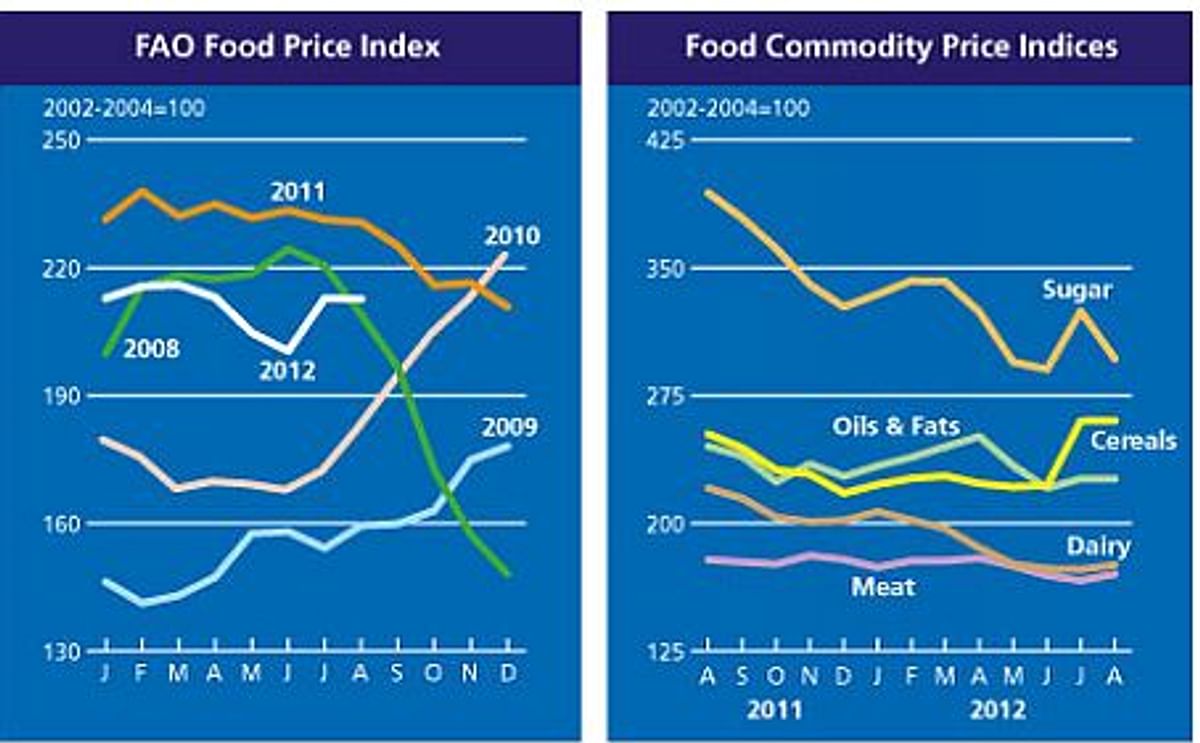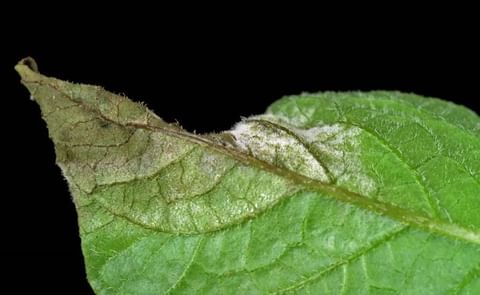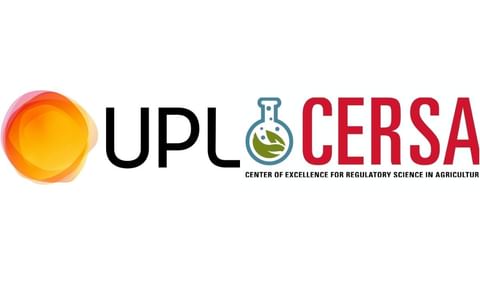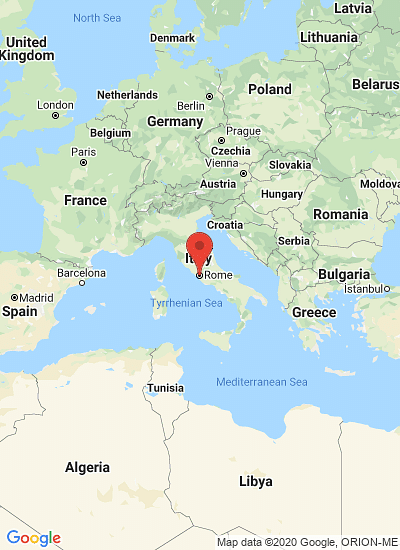The FAO Food Price Index averaged 213 points in August 2012, unchanged from the previous month. Although still high, the Index value is 25 points below the peak (238 points) reached in February 2011 and 18 points less than in August last year. International prices of cereals and oils/fats changed little but sugar prices fell sharply, compensating for rising meat and dairy prices.
The FAO Cereal Price Index averaged 260 points in August, the same as in July, with some increases in wheat and rice offsetting a slight weakening in maize. Deteriorating crop prospects for maize in the United States and wheat in the Russian Federation initially underpinned export quotations, but prices eased towards the end of the month, following heavy rains in areas hardest hit by drought in the United States and the announcement that the Russian Federation would not impose export restrictions. Renewed import demand sustained international rice quotations.
The FAO Oils/Fats Price Index averaged 226 points in August, unchanged from July, thus staying above the ten year trend, although still below 2008 and 2011 highs. Similar to last month, additional gains in soybean oil prices and strengthening quotations for sunflower and rapeseed oils have been offset by persistent weakness in palm oil values.
The FAO Meat Price Index averaged 170 points in August, up 4 points (2.2 percent) from July. All meat prices rose but most of the momentum came from the grain-intensive pig and poultry sectors, which saw their quotations firming by 4 and 6 percent respectively. The August price increase follows three consecutive months of declines.
The FAO Dairy Price Index averaged 176 points in August, up 3 points (1.6 percent) from July, sustained by increases in the prices of skim milk powder, casein, butter and whole milk powder, while cheese prices remained stable. Much of the recent strength stems from a firming demand combined with production constraints in those areas affected by drought and rising feed costs.
The FAO Sugar Price Index averaged 297 points in August, down 27.7 points (8.5 percent) from July, and 97 points (25 percent ) from August last year. This month’s sharp fall in sugar prices reflects improved production outlook amid more favourable weather conditions in Brazil, the world’s largest sugar exporter, which was supportive to sugarcane harvesting, and recovering monsoon rains in India.
Source: FAO
- News
- Food Trends
- No increase in...

September 06, 2012
Like to receive news like this by email? Join and Subscribe!
NEW! Join Our BlueSky Channel for regular updates!
Related Topics:
Related News

June 12, 2025
Polysense raises EUR 2 million to spice the food industry with AI to become more sustainable and profitable
Polysense, a Belgian technology start-up, raised EUR 2 million (USD 2.3 million) from tech entrepreneurs to further disrupt the food industry. The company specialises in AI solutions for production processes to reduce waste and increase efficiency. 
June 08, 2025
TNA Solutions Marks World Food Safety Day with Expert Insights from Steve Burgess
In recognition of World Food Safety Day on June 7, TNA Solutions has presented a timely expert blog titled “Engineering Better Food Safety” by Steve Burgess, General Manager – Europe & Africa at TNA Solutions.
April 30, 2025
Enactus UPEI's Spuds2Suds: Turning Potato Waste into Sustainable Soap and Community Support
UPEI students created Spuds2Suds, a soap made from surplus PEI potatoes. The eco-friendly project won top prizes at Enactus Regionals, donates a bar to food banks for each sold, and is now available locally. Next stop: Enactus Nationals in Calgary.Latest News
Sponsored Content
Sponsored Content
Sponsored Content
Sponsored Content
Where
Sponsored Content





